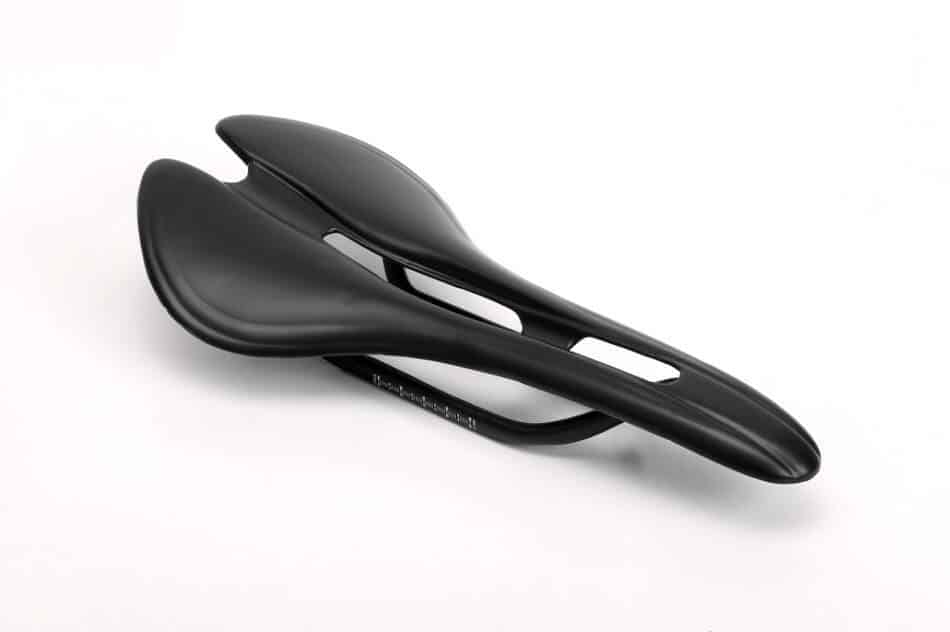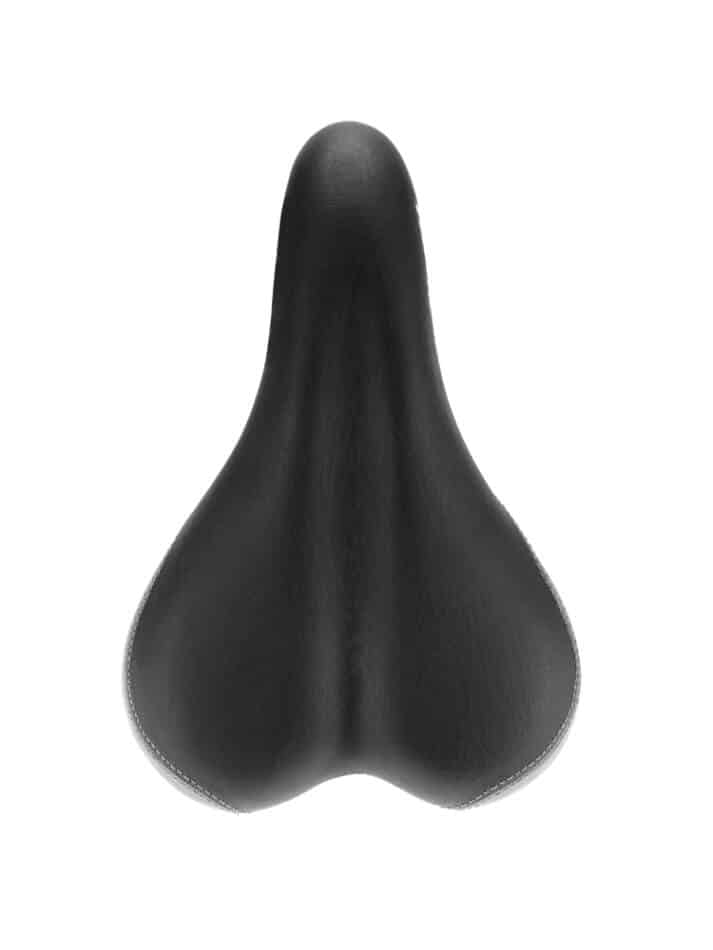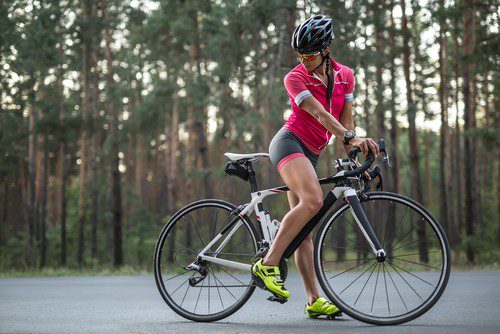Riding a bike is a fantastic way to get exercise, destress, enjoy scenic views, or just get around. However, no matter how long you plan to be on your bike, you never want it to be uncomfortable. Having a comfortable bike saddle (commonly referred to as a seat by some) will make the difference between a joyous journey and an agonizing chore, but how do you achieve this with one that already comes with a bike? Can a bike saddle be broken in?
Bike saddles made of synthetic materials do not break in; either they are comfortable from the start, or they will always be uncomfortable. A saddle made of leather, on the other hand, will break-in, but there is no guarantee it will still be comfortable.
Bicycling should be enjoyable; you shouldn’t have to dread the moment you hop on. If you are new to bicycling or just bought a new bike and found that your sit-bones are screaming, don’t be discouraged. Although modern synthetic bike saddles don’t break-in, you aren’t totally out of luck; you can buy a new saddle and make adjustments so you can have that pain-free ride.
What Factors Effect the Comfort Level of Bike Saddles?
If you were to dissect your bike saddle, you would find that it is made of multiple parts, including the cover and padding, shell, and rail:
The part that your derriere is most familiar with is the cover and padding. Sometimes, there is a lot of padding, and sometimes there is not. The padding on your saddle is likely made of either gel, which molds to your body, or foam, which has a little spring to it. While cushion can add some comfort, too much cushion can add friction.
Underneath the padding is the shell, which is what gives a saddle its shape. The shell can be made from carbon fiber, leather, molded plastic, or nylon. Although the padding adds some cushion for your behind, the shape of the shell has the most significant impact on your comfort; the size and the shape determine where pressure points will be. A well-fitting shell will decrease the pressure on your nerves and arteries.
Beneath the padding and shell is the rail. The rail is what connects the saddle to the bike frame. Rails can be made from Chromoly steel, titanium, or carbon fiber. The type of material that a rail is made from determines how flexible it is. Carbon fiber is the firmest, and Chromoly steel has the most flexibility. The flexibility of the rail adds to the overall comfort; a more flexible rail is usually more comfortable.
Saddle Styles
The great thing about bikes is you can switch the saddle if it isn’t working for you. There is a good chance that the saddle that comes with your brand new bike isn’t going to be the most comfortable one, so if the discomfort of your bike saddle is deterring you from riding, then consider buying a new one.

There are many types of bike saddles available. Some are geared towards specific styles of bicycling, such as racing, mounting biking, or touring. Others are designed for performance, and some are built with comfort in mind. Common saddle styles that are available include:
- Cutaway Saddle: These are lightweight, with cut out sections to reduce pressure.
- Gel Saddle: These are medium weight, wider, provide sit bone support, and have good cushioning.
- Mountain Bike Saddle: These are lightweight, narrow, have a shaped rear and downward slope, are reinforced, and have a bit of padding.
- Noseless Saddle: These are lightweight to medium weight, split down the center with no nose, are gender-specific, and have medium padding.
- Racing Saddle: These are lightweight, narrow, and have little to no padding.
- Suspension Saddle: These are lightweight, narrow, and have shock absorbers.
- Wide Saddle: These are heavy, wide, and provide support and comfort.
Many saddles have depressions and areas cut out; while this does decrease the weight of the saddle, and therefore, your overall bike, the primary purpose is to protect your perineum, or the area of your body between your sit bones.

Regardless of the style you buy, most modern saddles are made of synthetic materials that don’t break-in. On the other hand, most older saddles, in addition to a few modern ones, are made from leather. A leather saddle will break-in, but it will take several hundred miles of riding before it conforms to your shape.
Choosing a Comfortable Saddle
For people who are professional bike racers or diehard mountain bikers, comfort can be compromised for performance. For the rest of us who enjoy a bike commute to work or a weekend ride, having an uncomfortable saddle can be a deal-breaker. Although buying a saddle that is appropriate for your preferred riding style will help, you also must think about your body type.
Your Anatomy
One of the biggest reasons a bike saddle is uncomfortable is that it is not wide enough. Everyone’s body is different, and that includes the width between their ischial bones, more commonly called “sit-bones.”
If your saddle is too narrow, your body’s weight is going to be pressing down on the soft tissue between your sit bones. Buying a saddle that is wide enough allows the load to be carried by the bones instead, which will relieve pressure. Be careful, though, buying a saddle that is too wide can cause rubbing and chafing as you pedal. The wideness of your saddle is a Goldilocks situation.
Another anatomical thing to think about is your physical gender. Some saddles are designed specifically for a woman or man’s anatomy. The placement of cutouts and the width that is best for a woman might feel horrible for a man. Some saddles are gender-neutral, but buying one designed for a man or woman’s anatomy can be beneficial.
Other Tips and Tricks for a Comfortable Ride
Once you have picked out a saddle that works for your riding style and body, there are a few other things that can take your comfort to a whole new level.
Take a Seat: The best way to find the saddle that works for you is to actually try it out. You can look at the technical specs online and measure your body, but nothing beats going into a bike shop and sitting on a saddle to find the best fit.
Saddle Height: Adjusting the height of your saddle can make all the difference. When a saddle is too high, your weight shifts from side to side as you pedal; this can cause rubbing and irritation. The height you set your saddle to does depend on your riding style. For the casual rider, a reasonable height is where your knee has a gentle bend when the pedal is pushed toward the ground.
Saddle Fore/Aft Position: As you peddle, your feet go in a circular motion like a clock. When your foot reaches the 3 o’clock position, your knee should be directly above the ball of your foot and the pedal. If you find your knee is too far forward or too far back, you can adjust your saddle position.
Saddle Tilt: For most people, having their saddle parallel to the ground is best. You can easily adjust your saddle if it is tilted.
Take a Break: Even with the perfect adjustments and a comfortable seat, bike riding can cause pressure. Every ten minutes during your ride, give your sit-bones and perineum a break by standing up on your pedals.
Shock Absorbers: When you see a bump ahead, use your legs as shock absorbers. By standing up a little, you can avoid the jarring impact on your more sensitive areas. If you spend a lot of time riding on trails, then getting a bike with full-suspension is a great idea.
Bike Shorts: Bike shorts are made for bicycling. They have a padded seat for added comfort, reduces friction, and wicks away moisture.
Saddle Pad: A saddle pad is an add on that goes over your bike saddle to add a little extra squish. Note that they do tend to shift around, so make sure the pad you invest in is a suitable option for your saddle’s style.
Ask Someone: If you are not as familiar with bike gear and terminology, it helps to ask someone. Go into a store or reach out online. Bicycle dealers are familiar with their products, so if you tell them about your body type and riding style, they can point you in the right direction.
Final Thoughts
While your bike saddle might not break-in, your body will. Riding a bicycle is exercise. It uses muscles that you don’t use while walking or running, and you are bound to get sore and feel things you usually don’t. However, the more you ride your bike, the stronger those muscles will become, making your ride more enjoyable.
So, ditch your old saddle for one that treats your bottom right and get peddling!
Related articles:
Road Bike Seat Hurting? 8 Ways to Make It Better
Can a Bike Saddle be Too Wide or Too Narrow?


